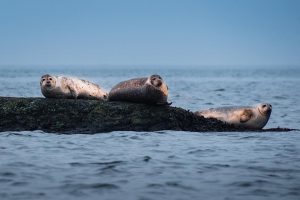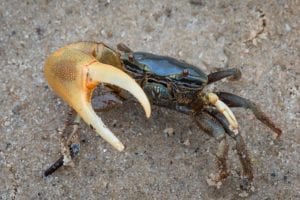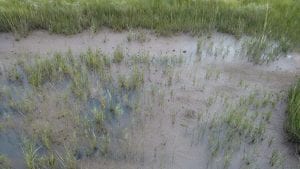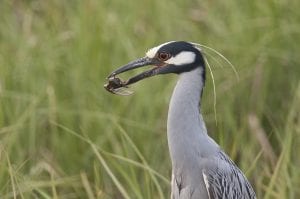A RARE DISPLAY
Jay Gao of Stony Brook snapped this incredible photo of Perseids and Northern lights taken at 2 a.m. on Aug. 12 at Stony Brook Beach with a Nikon D5500 camera.
Send your Photo of the Week to [email protected].
A RARE DISPLAY
Jay Gao of Stony Brook snapped this incredible photo of Perseids and Northern lights taken at 2 a.m. on Aug. 12 at Stony Brook Beach with a Nikon D5500 camera.
Send your Photo of the Week to [email protected].
PLEIN AIR MASTERPIECE
Stony Brook resident Jay Gao snapped this photo of artist Denise Franzino creating a beautiful work of art at Frank Melville Memorial Park while attending Gallery North’s 20th annual Wet Paint Festival in Setauket’s historic district on June 1. The well-attended two-day event featured over 40 artists, plein air art tours, nature and history walks, a visit from Sweetbriar Nature Center and live music.
Send your Photo of the Week to [email protected]
A WALK IN THE CLOUDS
Jay Gao captured this incredible shot of a juvenile American white ibis at West Meadow Beach in his hometown of Stony Brook on Aug. 16
Send your Photo of the Week to [email protected]

NEW YEAR’S EVE VISITORS
Jay Gao of Stony Brook snapped these incredible shots on Dec. 31, 2021 from Crane Neck Point Beach. He writes, ‘My wife and I were taking a walk from West Meadow Beach in the afternoon. When we arrived the rocky area near Crane Neck Point, to our surprise, we saw several harbor seals resting on the rocks. It was low tide, so I could get close enough to take these photos.’
FEATURED PHOTOGRAPHER: Jay Gao

Hometown: Stony Brook
Photographer: When empty-nested, I bought myself a Nikon D750 camera, my first DSLR, at the end of 2015 as a New Year’s gift. Before that, I had experience in using compact point and shoot cameras.
Favorite camera: Nikon D750, an entry-level full-frame DSLR. I love its strength in low-light performance.
Favorite lenses: For wildlife, I mostly use Sigma 150-600mm 5-6.3 Contemporary, and for travel I like to use Nikon 24-120mm f/4. When shooting flowers, I prefer to use Nikon AF-S VR Micro-NIKKOR 105mm f/2.8G.
Favorite locations: I love to visit the Stony Brook Mill Pond and Stony Brook Harbor with my camera. It is a beautiful place all year round and there are so many kinds of birds. As a matter of fact, this is mostly where I have been practicing my bird shots. My other favorite spots include my backyard, West Meadow Beach, Nissequogue River State Park and Sunken Meadow State Park.
Have you entered any photo contests? I won first place in the 2018 Better Newspaper Contest of New York Press Association; was selected to exhibit in the Oversea Chinese History Museum in Beijing by the committee of the 4th World Overseas Chinese Photography Exhibition (2019); and won in the “China’s City View” theme of Impression of China photography contest in 2020, although the display was canceled due to COVID-19 pandemic.
Favorite aspect about taking photos: I enjoy going out and shooting with my camera. In addition to appreciating and sharing of the beauty of mother nature, you can benefit from the fresh air and physical exercise.
Best advice to get that perfect shot:
Go out often and enjoy. When shooting birds, pay attention to the background and try to get close to their eye levels. I mostly use these camera settings: manual mode (1/1200 s, f8 and auto ISO), single point continuous focus and continuous shooting. I love to use the back button focus.
By Ellen Mason, Stony Brook
Mother Nature is angry
And she’s showing her wrath.
We’ve destroyed her best efforts,
Walking down this wrong path.
Our health is at stake,
And the health of our earth.
But we’ve not done enough
To make up for this dearth.
Water pollution,
Severe climate change,
Endangered species,
There’s a whole range
Of needed improvements
For what we have wrought.
We’ve squandered our riches,
And look what we’ve bought!
Yes we’ll get through this,
She’s stern but not cruel.
But we must pay attention
And live by new rules.
OCEAN WATCHING:
Jay Gao of Stony Brook snapped this cool photo at McAllister County Park in Belle Terre with his Nikon D750 camera on Feb. 15
Send your Photo of the Week to [email protected]
By John L. Turner
If you visit just about any salt marsh fringing Long Island’s interdigitated coastline, you’ll experience the fiddlers — they simply can’t be avoided. And while you won’t hear fiddle music, despite the fact there are many hundreds if not thousands of fiddler’s ceaselessly “rosining up their bows,” you will certainly be entertained and amused by male fiddler crabs waving their unusually large claws back and forth like a convention of fiddle players at a folk music festival.
This prominent and highly distinctive abnormally large claw possessed by the male fiddler crab, which can weigh half as much as the rest of its body, isn’t used as a defense against predators. Rather, it’s used in combat with rival males and for attracting a mate; male crabs possessing larger claws generally having more success (yes, for this species size appears to matter!).

As a female crab walks by a courting male, he vigorously waves the claw back and forth in an attempt to interest her in mating (this behavior also explains their other name — the calling crab). If his display proves successful, she follows him back to his burrow to take a closer look. If she accepts him, the male grabs material to seal the burrow and within it mates with her. He will later emerge, resealing the burrow within which she is incubating the eggs. In a week or two she’ll emerge to release her eggs, generally timing release to coincide with a high tide. They hatch and the larvae float in the water column before eventually settling out; this dispersal helps to maintain genetic diversity among crab populations.
Three species of fiddler crabs inhabit Long Island’s coastal environments: the mud fiddler (Minuca pugnax) appears to be the most common, followed by the sand fiddler (Leptuca pugilator) with the red-jointed or brackish-water fiddler (Minuca minax) being the least common. They segregate habitat as their names suggest — mud fiddlers found in the mud-rich, organic areas of salt marshes, sand fiddlers utilizing sandy areas, and the red-jointed fiddlers occurring in areas where waters are more brackish, containing lower salt content. They can be a bit of a challenge to identify but with some practice it can be done.
Worldwide, 105 species of fiddler crabs are currently recognized. They are found along the coastlines of every continent, thus having a global distribution, specifically occurring along the coastlines of southern Asia, Africa (especially the east coast), northern Australia, both coasts of Central America, South America and the southern half of North America. They are distributed within a band of about 40 degrees north and south of the equator; our fiddler populations are among the farthest from the equator, being able to occur this far north due to the provisioning warmth of the Gulf Stream current. The colder waters bathing the coast of Europe preclude their presence there.

One of my favorite places to observe fiddler crabs in the Three Village area is Flax Pond, the wonderful natural area owned by New York State (hence you!) located in Old Field, in the northwestern corner of Brookhaven Town. A newly reconstructed boardwalk bisects the marsh, passing over a tidal marsh and stream. About 100 yards north of its beginning the boardwalk offers an ideal vantage point to view these intertidal crabs feeding below in the salt marsh, the boardwalk itself effectively serving as a blind.
If you time the tides right (low tide or falling tide is best), many hundreds of fiddlers will dot the marsh surface — many courting, waving their big claw to and fro while many more take advantage of the exposed mud to feed. If you stroll along one edge of the boardwalk where the crabs can see you, the marsh will appear in motion from the action of countless crabs moving away from you. Other local productive sites include West Meadow Creek and Stony Brook Harbor.
The fiddler’s burrow, as much as 2 feet long, is critical to a crab’s survival. Here it finds protection from predators and shelter from the high tides which twice daily inundate the burrow (they’re safe in their plugged, air-filled chamber). Even if water enters, they can survive since fiddler crabs have both gills allowing them to breathe in water and a primitive lung which allows them to breathe when feeding in the air on the marsh surface. Studies document their burrow is the “hub of the wheel” from which they never move too far.
One study, by an Australian researcher, documented that crabs tend to orient themselves to their burrow, not by facing it or having their back to it, but rather sideways with one half of their set of four legs facing the burrow in the event they have to rapidly scurry sideways to gain protection from a predator.
If you pay closer attention to the crabs’ enlarged claws, you’ll notice that they’re about evenly split between left-handed and right-handed individuals, with some populations having slightly more of one or the other. If the large claw is lost to a predator or in battle, the smaller claw enlarges to become the “fiddler” claw while the regenerated claw remains small, becoming the feeding claw.
Watching crabs feed is fun; the females with two normal size claws feed more efficiently than do the males who can utilize but one claw, since the larger one is useless as a feeding tool. Recently, I watched several females feeding and they brought food to their mouths about once a second for minutes on end. Fiddlers feed on decaying vegetation, bacteria, algae and other organic matter found in the sand or mud, efficiently sifting out with their mouthparts the sand particles which they cast aside in the form of little balls or pellets.

Their distinctive stalked eyes provide an alien, other-world look to the species. They have compound eyes, like dragonflies, with up to 9,000 eye facets that can see into the ultraviolet range of the light spectrum! Being on stalks allows them to have slightly elevated, panoramic vision of the marsh around them, a good thing since they face numerous predators that frequent tidal wetlands. The visual sensors on top of their eyes enable them to see motion from overhead, a key adaptation since they are subject to predation by birds.
Speaking of birds, several species routinely eat fiddlers. American bittern and clapper rails feed on them as do a variety of wading birds such as white and glossy ibis and American egret; yellow-crowned night herons, whose diet is largely restricted to crabs, especially focus on fiddler crabs. Diamondback terrapins eat them as do river otters.
Being a key part of the estuarine or coastal food chain is one of the important ecological benefits fiddlers provide; they also play a key role in recycling marsh nutrients through their feeding activities. Their burrows, which collectively can number in the many thousands in a large marsh, help to oxygenate the soil, helping marsh plants to grow such as cordgrass and salt hay. Their presence is also a “bio-indicator” — a general indication of a salt marsh’s high ecological health, generally occurring in tidal wetlands free of pollution and contamination.
Why not make their acquaintance before they retreat deeply into muddy burrows for their long winter slumber?
A resident of Setauket, John Turner is conservation chair of the Four Harbors Audubon Society, author of “Exploring the Other Island: A Seasonal Nature Guide to Long Island” and president of Alula Birding & Natural History Tours.
‘Hey , horsefly, I’m a dog, not a horse!’
Jay Gao captured this awesome photo of a dog encountering an unwelcome guest while taking a dip at Sand Street Beach in his hometown of Stony Brook on the evening of Aug. 6 with a Nikon D5500 camera.
THE MOON AND NEST
Jay Gao of Stony Brook captured this incredible image at West Meadow Beach with a Nikon D750 on May 16. He writes, ‘It was in the late afternoon, and a full moon was rising while the sun was setting on the Sound. I was amazed to notice that the moon was sitting on the top of the osprey nest like a huge egg. In no time, the raptor came back to the nest and I took the shot.’
Send your Photo of the Week to [email protected]
